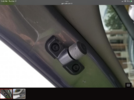I admit that I am more sensitive to annoying noise and ear pressure in the car, but MY is far from a good built car. I have driven Lexus vehicles for 15 years and never had to put sound deadening pads because the manufacturer already had it there. On the other hand, Honda vehicles seemed like tin cans to me, so I avoided them, but millions of people drive them with no issues.
I didn’t post here to pick a fight. I bought the car for powertrain performance and am very happy with that. I knew the software has issues and I can live with it. The buffeting and noise issues were something that I could not live with, so I tried almost everything that people in this forum had success with, and just wanted to report what worked for me. If someone is happy with the car as is, nothing wrong with that either. But it’s not a car built by luxury car standards, though it’s priced like one.
I didn’t post here to pick a fight. I bought the car for powertrain performance and am very happy with that. I knew the software has issues and I can live with it. The buffeting and noise issues were something that I could not live with, so I tried almost everything that people in this forum had success with, and just wanted to report what worked for me. If someone is happy with the car as is, nothing wrong with that either. But it’s not a car built by luxury car standards, though it’s priced like one.



